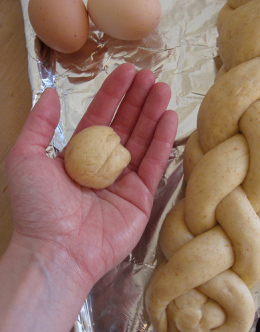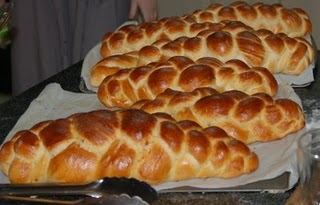Blog
THE MITZVA OF TAKING CHALLAH
by Rabbi Yedidya Krauthammer – Rav Hamachshir
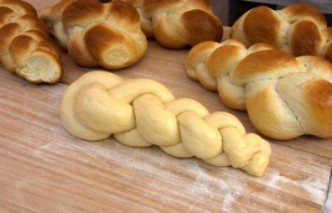
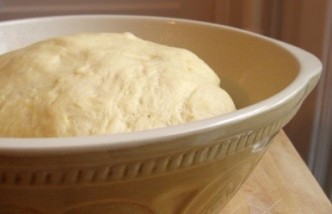
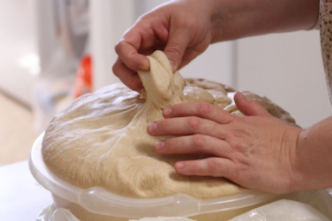
A: WHERE AND WHEN IS CHALLAH TAKEN?
1.The Torah says in the weekly reading of Shelach Lecha (Bamidbar 15; 17 – 21) that when we come to the land of Israel [and make] and eat bread, we must separate a portion for H. from each kneading of dough.
This renders Challah a “mitzva hat’luya ba’aretz” i.e. a “mitzva that hinges on the land” and should therefore only apply in Israel as is the case with Terumot and Ma’asrot (separating the appropriate tithes) and seventh year Shemitta (Sabbatical – refraining from working the land).
2.However Challah differs from other mitzvot of its kind; the Sages extended it to apply everywhere (so as to keep the mitzva ‘alive’ – see elaboration in Aruch Hashulchan Yore Dea 323:11 and 12).
3.Even in Israel the mitzva today is Rabbinic only, since the majority of the Jewish people do not live there; however there are various stringencies that apply today in Israel that do not apply out of Israel, one of which is mentioned below (C3).
B. FROM WHAT IS CHALLAH TAKEN?
1. A dough made of one of “the five grain species” – wheat, barley, spelt, rye and oats (the same as those that produce Chametz and are used for Matzah) that is mixed with water to be made into bread or cake carries the obligation of Challah.
2. It does not have to be ‘Hamotsi’ bread; even if it is made mainly with fruit juice, milk, eggs, wine or honey etc. – if the smallest amount of water is added, then Challah has to be taken with a Beracha. (Note: These rules differ from those which determine the Beracha of Hamotsi and Birchat Hamazon).
3. Even if additives, fillings or toppings are added to the above dough (as with pizza etc.) it retains its status as to Challah.
4. However if no water at all is used in the dough, then Challah is taken without a Beracha.
5. The intention has to be to bake the dough in an oven of some sort (even a frying pan where only a small amount of oil is used (so that it doesn’t stick) is an ‘oven’ in this respect); if the procedure is to have it deep fried, then again Challah is taken without a Beracha. If it is a different kind of dough whose procedure is to cook it in water (as with the traditional kneidlach), there is no Challah taken at all.
6. Cakes that are not made from a dough but from a batter are also included in the mitzva of Challah, but in this case the Challah is taken after the baking (when it has substance and a ‘piece’ can be broken off).
C. WHEN IS CHALLAH TAKEN?
1. The proper time to take Challah is after the dough is kneaded before it is placed in the oven. Challah cannot be taken from flour before it is made into dough. (This creates a problem for the big bakeries where it is impractical for the Mashgiach to be available to take Challah precisely every time that a dough has been made. How they resolve this problem is beyond the scope of this article.)
2. If for whatever reason Challah was not separated from the dough, it can still be done after the baking. When doing so, one should see to it that all the baked products from which the Challah is being taken are put together or close to each other i.e. on the table, this is the rule of ‘min hamukaf’- that when separating tithes, Challah or Teruma or Ma’aser, everything involved should be together.
3. In Israel, Challah is like all the tithes – Terumah, Ma’aser etc. in that until the appropriate tithes are taken, it is forbidden to eat the food (‘Tevel’). However in the case of dough made outside Israel this does not apply and the bread etc. can be eaten as long as some will be left over for Challah to be taken from it afterwards. (This could be especially useful if in a Matzah bakery they forgot to separate Challah from the dough or the matzos; in Israel, this renders them inedible and on Yomtov when it is forbidden to separate Challah, they would not be usable for the Seder, whereas if the matzos were made outside Israel it would be fine to use them on Yomtov as long as some is left over for the Challah to be taken later.)
D. FROM HOW MUCH FLOUR IS CHALLAH REQUIRED TO BE TAKEN?
1.The Torah [ibid 15. 20] clearly states that Challah is to be taken from “your kneading troughs”. This refers to the amount of Manna that was consumed at the time in the desert by one person per day which is an Omer [Exodus 16.16] equal to a tenth of an Efah [ibid 16.36]. This is equivalent to the volume of 43 eggs (see commentaries on Mishnah Challah 2.4 and Yore Deah 323), 43 being coincidentally – and perhaps not so coincidentally – the numerical value of the Hebrew word ‘Challah’. Today we define this in terms of the amount of flour – in weight – used in the dough.
Since there is much controversy involved in determining the size of the average egg referred to in Halacha and also doubts as to the translation of volume into weight with various types of flour, the usual practice is to recognize two shiurim, Halachic amounts, that generate the mitzva of Challah:
a) if 1.2kg of flour is used, Challah is taken without a Beracha
b) If 2.25 kg is used, then Challah is taken with a Beracha
(Note: There are some who follow the custom to separate from 1.66 kg with a Beracha)
2. The above amount need not be in one dough, even if several doughs are made from a total of the above amount of flour there is an obligation to fulfil the mitzva of Challah. However this is only if the different doughs are compatible; i.e. they are similar enough that if put next to each other and one would ‘bite’ from the other there would be no problem; if this is not the case i.e. one is for bread and made with salt and the other for cake and made with sugar, then they do not combine to create an obligation of Challah.
3. Also, in order to combine and create an obligation of Challah, the doughs have to either touch each other or be placed together in a container.
4. The concept of creating an obligation of Challah by putting together in a container smaller amounts that add up to the shiur (the amount that carries the Halachic obligation) is particularly relevant in the case where Challah is taken after baking (see above C2). Sometimes different breads and cakes that were made separately are put together in a box and this creates an obligation of Challah that did not exist before.
5. There are two conditions for the above phenomenon (creating an obligation of Challah by putting together baked goods in a container):
a) that none of the items needed to add up to the shiur is completely above the walls of the container (as could be for instance the case with a pile of matzos that are placed in a box with no lid).
b) that the items are compatible i.e. all the same product or similar, such as cookies or cakes that are interchangeable.
E. HOW IS CHALLAH TAKEN?
1. A small amount (the Ashkenaz custom is to take a k’zayit) is taken from the dough or broken off one of the baked goods and put aside.
2. The Beracha is said: Baruch ……….asher kid’shanu vemitsvotav vetsivanu lehafrish Challah (some add the words ‘min ha’issa’ i.e. ‘from the dough’, if this is the case).
3. The Challah that has been separated is holy and therefore forbidden to eat even by Kohanim nowadays that we are impure. It must be either burnt or discarded respectfully.
4. It can be burnt in the oven as long as there is nothing else there at the time so that it does not become treif from the Challah.
5. Alternatively it can be left until it becomes unfit for consumption and then be wrapped up and thrown in the bin.
6. The mitzva of Challah is specifically associated with women as a remedy for the sin of Eve (“she occasioned the downfall of Adam – the ‘Challah’ of the world; let her correct this by performing the mitzva of Challah”) and so it is preferable that the lady of the house does it rather than a man.
7. This mitzva, together with the other mitzvot associated with women, merits those who observe them with Divine assistance when giving birth. (There is a bakery in Israel where women line up to be given the opportunity to perform the mitzva of Challah.)
